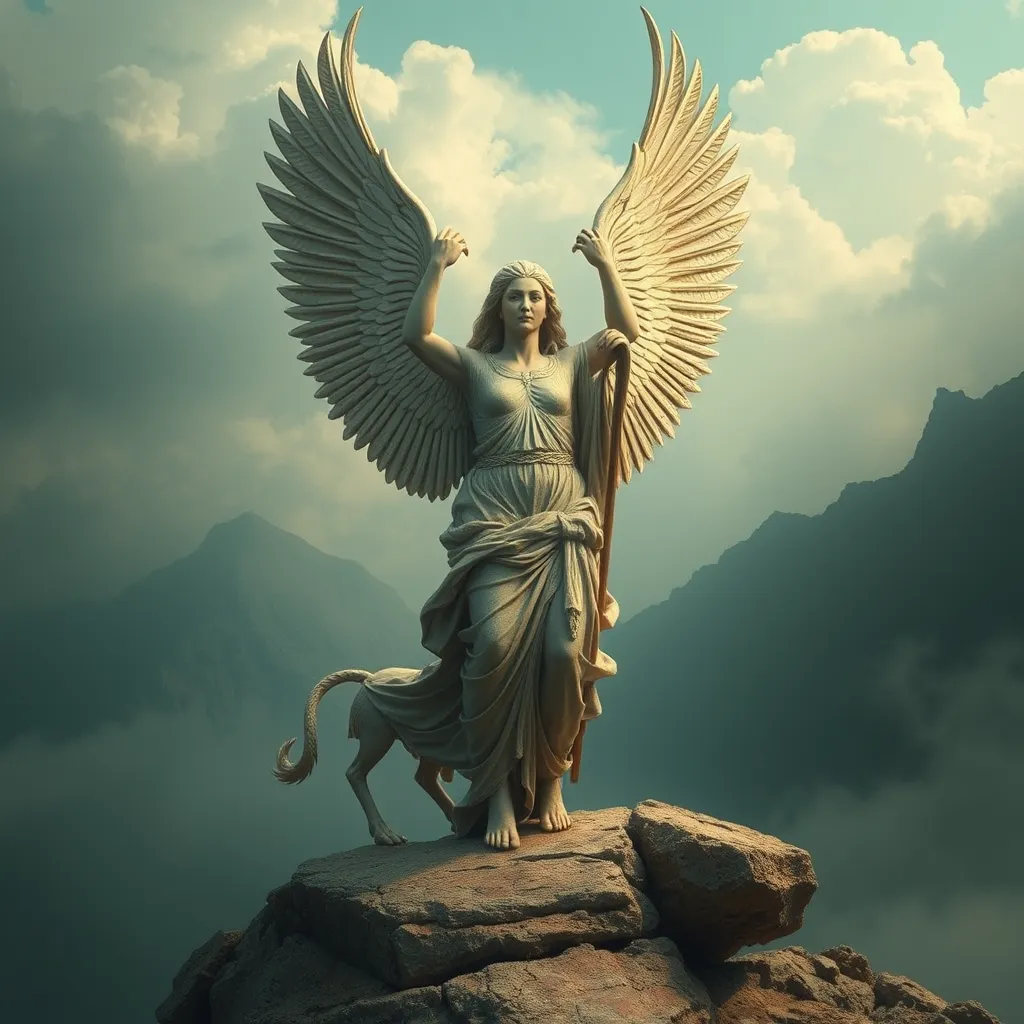Beyond Phineus and the Harpies: Exploring the Symbolism of Harpy Legends
I. Introduction
The mythology of Harpies is rich and complex, woven into the fabric of ancient literature and folklore. These winged spirits, often depicted as women with the bodies of birds, embody a fascinating blend of beauty and terror, serving as symbols that resonate through time.
In ancient texts, Harpies are frequently associated with themes of punishment, chaos, and retribution. Their significance extends beyond mere characters in mythological tales, suggesting deeper meanings that reflect the societal values and beliefs of the cultures that created them.
This article aims to explore the deeper symbolism of Harpy legends, examining their origins, roles in mythology, and cultural impact, as well as the broader implications of their representations in both ancient and contemporary contexts.
II. The Origin of Harpies in Greek Mythology
A. Definition and characteristics of Harpies
In Greek mythology, Harpies are often defined as half-woman, half-bird creatures. They are typically portrayed with the faces of beautiful women but possess the wings and claws of birds of prey. This duality highlights their nature as both alluring and dangerous.
B. The role of Harpies in the story of Phineus
One of the most notable stories involving Harpies is that of Phineus, a seer who was punished by the gods for revealing too much knowledge. The Harpies were sent to torment him, stealing his food and leaving behind a foul stench. This myth illustrates their role as agents of divine punishment, showcasing their chaotic nature and the wrath of the gods.
C. Historical context of their emergence in mythology
The emergence of Harpies in mythology can be traced back to ancient Greek literature, where they appear in works such as Hesiod’s “Theogony” and in the “Argonautica” by Apollonius of Rhodes. Their depiction evolved over time, reflecting societal changes and the shifting landscape of Greek thought.
III. Harpies as Symbols of Punishment and Retribution
A. The association of Harpies with divine punishment
Harpies are often associated with themes of punishment and retribution, serving as agents of the gods’ will. They embody the consequences of hubris and the moral lessons imparted by the divine.
B. Analysis of specific myths illustrating this symbolism
- Phineus and the Harpies: As mentioned, Phineus’s punishment serves as a prime example of the Harpies’ role as enforcers of divine retribution.
- The Argonauts’ Encounter: In their quest for the Golden Fleece, the Argonauts must confront the Harpies to free Phineus, illustrating the need to confront one’s fears and the consequences of one’s actions.
C. The moral implications of Harpy encounters
Encounters with Harpies often carry moral implications, suggesting that those who transgress societal boundaries will face dire consequences. Their presence serves as a reminder of the balance between human actions and divine justice.
IV. The Dual Nature of Harpies: Destruction and Protection
A. Harpies as agents of chaos
While Harpies are often seen as harbingers of chaos and destruction, their role is not solely negative. They represent the unpredictable nature of life and the chaos that can arise from human folly.
B. Instances where Harpies serve protective roles
Interestingly, there are instances in mythology where Harpies take on protective roles. For example, in some versions of the myth, they help the Argonauts navigate treacherous waters, showcasing their dual nature.
C. The balance of their destructive and protective symbolism
This duality reflects a complex understanding of nature and the human experience, suggesting that destruction can lead to renewal and that chaos can sometimes provide guidance.
V. Gender and the Representation of Harpies
A. The feminine aspect of Harpy legends
The Harpies are distinctly feminine figures, and their portrayal raises questions about gender roles in ancient mythology. They embody both beauty and ferocity, challenging conventional notions of femininity.
B. Examination of gender dynamics within Harpy myths
Harpies often reflect societal views on women, particularly the fears and anxieties surrounding female power. Their dual nature can be interpreted as a commentary on the complexities of womanhood in a patriarchal society.
C. Impact of societal views on women reflected in Harpy symbolism
The myths surrounding Harpies reveal much about ancient attitudes toward women, highlighting the tension between admiration and fear, beauty and danger. This duality continues to resonate in modern interpretations of female figures in literature and art.
VI. Harpies in Art and Literature
A. Artistic representations of Harpies throughout history
Throughout history, Harpies have been depicted in various forms of art, from ancient pottery to Renaissance paintings. These representations often emphasize their grotesque features and chaotic nature.
B. Literary adaptations and reinterpretations of Harpy legends
In literature, Harpies have been reinterpreted in various ways, from classical texts to modern fantasy novels. Each adaptation explores different facets of their symbolism, reflecting contemporary societal issues.
C. Influence of Harpy symbolism in modern storytelling
Today, Harpies continue to influence modern storytelling, appearing in films, books, and video games. Their symbolism resonates with themes of empowerment, chaos, and the complexity of human emotions.
VII. The Cultural Impact of Harpy Myths
A. Harpies in contemporary culture and media
Harpies have found new life in contemporary culture, often serving as allegorical figures that represent the struggles of individuals against societal norms. They appear in various media, including television series, graphic novels, and movies.
B. The relevance of Harpy symbolism in societal themes today
The symbolism of Harpies remains relevant in discussions about gender, power, and the consequences of moral transgressions. Their narratives reflect ongoing societal themes, such as the struggle for agency and recognition.
C. Cross-cultural comparisons of similar mythological figures
Across different cultures, similar figures can be found that embody aspects of the Harpy myth. For instance, the Slavic Rusalka and the Native American Windigo share thematic elements of chaos and transformation, illustrating the universal nature of these archetypes.
VIII. Conclusion
In summary, the symbolism of Harpies extends far beyond their roles in ancient myths. They embody themes of punishment, chaos, protection, and the complexities of femininity. Their narratives serve as powerful reflections of societal values and human experiences.
The enduring legacy of Harpy legends invites further exploration of mythological symbolism, challenging us to examine our beliefs and the stories we tell. As we continue to engage with these ancient narratives, we uncover new layers of meaning that resonate with contemporary issues, ensuring that the Harpies remain a fascinating subject for both scholars and enthusiasts alike.



